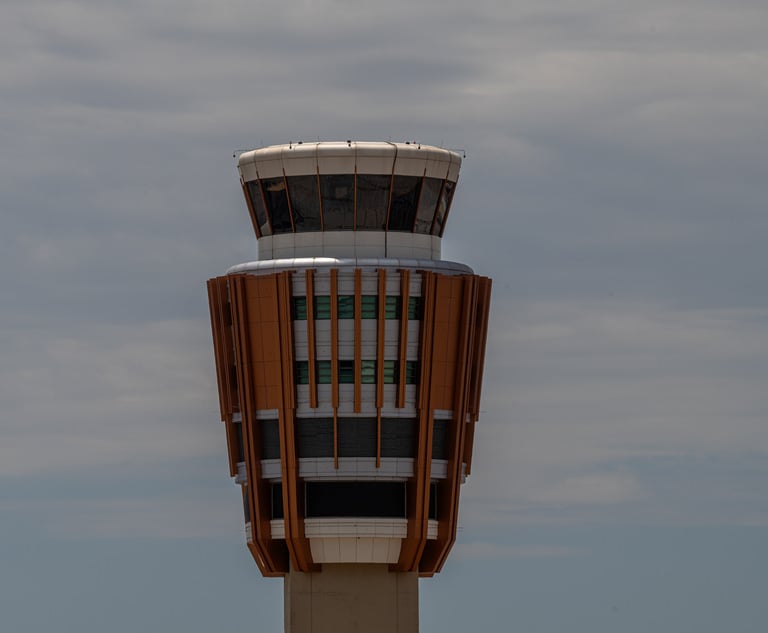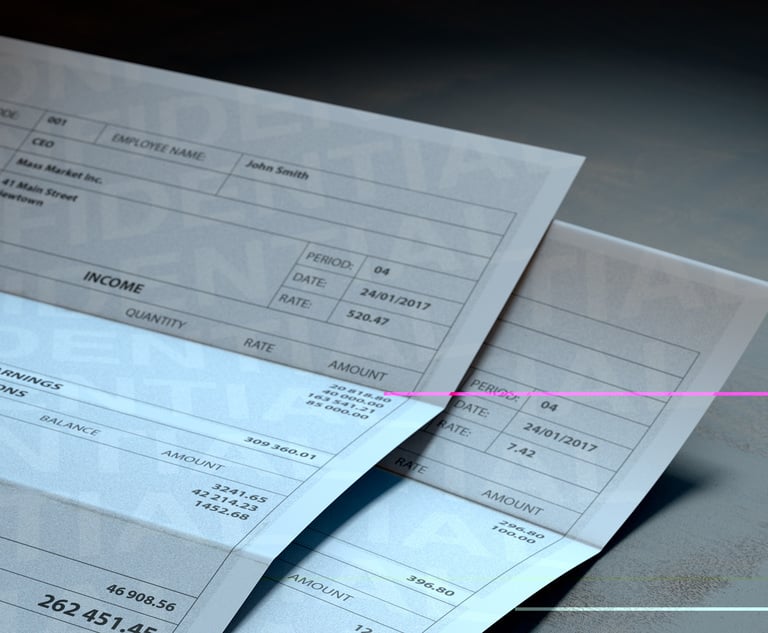Pre-Impact Terror and Conscious Pain and Suffering in Wrongful Death Cases
Trial Practice columnists Robert S. Kelner and Gail S. Kelner write that even though the jury awards were reduced in the catastrophic 91st St. crane collapse case, the Appellate Division allowed very significant amounts for the decedents' preimpact terror as the giant crane collapsed, and for their conscious pain and suffering after sustaining catastrophic injuries. This decision should encourage more vigorous examination of damages for preimpact terror and conscious pain and suffering in future wrongful death cases.
September 25, 2017 at 02:04 PM
13 minute read
The decision of the Appellate Division, First Department, earlier this month in the catastrophic 91st St. crane collapse case should have a significant impact on the analysis of damages in wrongful death actions. In addressing issues of liability and damages arising out of two wrongful death actions in Matter of 91st Street Crane Collapse Litigation, 2017 NY Slip Op 06419, 2017 WL 4003161 (1st Dept. Sept. 12, 2017), Justice Troy Webber, writing for a unanimous panel, described the unimaginable horror of these two decedents' last minutes. Even though the jury awards were reduced, the Appellate Division allowed very significant amounts for their preimpact terror as the giant crane collapsed, and for their conscious pain and suffering after sustaining catastrophic injuries. Based upon defendants' inexcusable actions which proximately caused this accident, the court also found very significant punitive damages to be merited.
This decision should encourage more vigorous examination of damages for preimpact terror and conscious pain and suffering in future wrongful death cases. Although the most commonly discussed element of damages in a wrongful death action has generally been the pecuniary loss to the next of kin, this case will certainly cause re-examination and re-evaluation of the horrific last minutes of a person's life as a result of negligence.
Facts in the Crane Case
The facts were extensively discussed in the Appellate Division decision. The tower of the immense crane which toppled was over 200 feet high. The cab, in which plaintiff Leo's decedent, Donald Leo, as the operator, was sitting, as well as the 160-foot boom and the counterweight arm that extended in the opposite direction from the boom, all rested upon a turntable assembly that connected them to the tower while allowing them to rotate. One of the main components of the turntable assembly was a 69-inch diameter bearing ring that effectuated the assembly rotation. Sometime in 2007, before being used at the accident site, the crane's bearing ring developed a crack while being used at another site. In order to save money and expedite replacement of the ring, defendants did not order it from the manufacturer but rather found a Chinese company, RTR Bearing Company, through an Internet search, which would produce it cheaply and more quickly. The individual defendant, James Lomma, admitted that if the ring failed, the results would be catastrophic. The Chinese company itself initially expressed its concern that it did not have confidence in its welding technique but finally agreed to produce it. There were multiple issues with the weld. Indeed, defendants learned another crane had a problem because of a bad weld by this same company, but proceeded nonetheless. The failure of the ring and the weld were ultimately found to be precipitating factors in this tragedy.
At trial, the jury awarded plaintiff Leo $7.5 million for preimpact terror and $8 million for the pain and suffering of her decedent, and $24 million in punitive damages. The damages were reduced by the First Department to $2.5 million for preimpact terror, $5.5 million for conscious pain and suffering and $8 million in punitive damages. The jury awarded the family of decedent Kurtaj, who was crushed by the falling crane, $7.5 million for preimpact terror, $24 million for pain and suffering, and $24 million in punitive damages. The damages were reduced by the First Department to $2 million for preimpact terror, $7.5 million for conscious pain and suffering and $9.5 million for punitive damages.
Damages for Pre-impact Terror
In her decision, Justice Webber stated that preimpact terror is considered a sub-category of conscious pain and suffering in a wrongful death case. Damages for preimpact terror cover that time period when decedent first appreciated the danger which ultimately resulted in death and the moment that physical injury was sustained. In assessing damages, preimpact terror and post-injury conscious pain and suffering have frequently been analyzed as separate items of damages. It is possible that either, or both, or neither, will be an element of damages in any given wrongful death case.
This content has been archived. It is available through our partners, LexisNexis® and Bloomberg Law.
To view this content, please continue to their sites.
Not a Lexis Subscriber?
Subscribe Now
Not a Bloomberg Law Subscriber?
Subscribe Now
NOT FOR REPRINT
© 2025 ALM Global, LLC, All Rights Reserved. Request academic re-use from www.copyright.com. All other uses, submit a request to [email protected]. For more information visit Asset & Logo Licensing.
You Might Like
View All

You’re Sure You’ve Looked? The Use of Jackson Affidavits and Efforts to Locate Discovery Materials
8 minute read

Five Years After Vega Much Remains Unsettled in Pay Frequency Litigation
Trending Stories
- 1Trump's DOJ Files Lawsuit Seeking to Block $14B Tech Merger
- 2'No Retributive Actions,' Kash Patel Pledges if Confirmed to FBI
- 3Justice Department Sues to Block $14 Billion Juniper Buyout by Hewlett Packard Enterprise
- 4A Texas Lawyer Just Rose to the Trump Administration
- 5Hogan Lovells Hires White & Case Corporate and Finance Team in Italy
Who Got The Work
J. Brugh Lower of Gibbons has entered an appearance for industrial equipment supplier Devco Corporation in a pending trademark infringement lawsuit. The suit, accusing the defendant of selling knock-off Graco products, was filed Dec. 18 in New Jersey District Court by Rivkin Radler on behalf of Graco Inc. and Graco Minnesota. The case, assigned to U.S. District Judge Zahid N. Quraishi, is 3:24-cv-11294, Graco Inc. et al v. Devco Corporation.
Who Got The Work
Rebecca Maller-Stein and Kent A. Yalowitz of Arnold & Porter Kaye Scholer have entered their appearances for Hanaco Venture Capital and its executives, Lior Prosor and David Frankel, in a pending securities lawsuit. The action, filed on Dec. 24 in New York Southern District Court by Zell, Aron & Co. on behalf of Goldeneye Advisors, accuses the defendants of negligently and fraudulently managing the plaintiff's $1 million investment. The case, assigned to U.S. District Judge Vernon S. Broderick, is 1:24-cv-09918, Goldeneye Advisors, LLC v. Hanaco Venture Capital, Ltd. et al.
Who Got The Work
Attorneys from A&O Shearman has stepped in as defense counsel for Toronto-Dominion Bank and other defendants in a pending securities class action. The suit, filed Dec. 11 in New York Southern District Court by Bleichmar Fonti & Auld, accuses the defendants of concealing the bank's 'pervasive' deficiencies in regards to its compliance with the Bank Secrecy Act and the quality of its anti-money laundering controls. The case, assigned to U.S. District Judge Arun Subramanian, is 1:24-cv-09445, Gonzalez v. The Toronto-Dominion Bank et al.
Who Got The Work
Crown Castle International, a Pennsylvania company providing shared communications infrastructure, has turned to Luke D. Wolf of Gordon Rees Scully Mansukhani to fend off a pending breach-of-contract lawsuit. The court action, filed Nov. 25 in Michigan Eastern District Court by Hooper Hathaway PC on behalf of The Town Residences LLC, accuses Crown Castle of failing to transfer approximately $30,000 in utility payments from T-Mobile in breach of a roof-top lease and assignment agreement. The case, assigned to U.S. District Judge Susan K. Declercq, is 2:24-cv-13131, The Town Residences LLC v. T-Mobile US, Inc. et al.
Who Got The Work
Wilfred P. Coronato and Daniel M. Schwartz of McCarter & English have stepped in as defense counsel to Electrolux Home Products Inc. in a pending product liability lawsuit. The court action, filed Nov. 26 in New York Eastern District Court by Poulos Lopiccolo PC and Nagel Rice LLP on behalf of David Stern, alleges that the defendant's refrigerators’ drawers and shelving repeatedly break and fall apart within months after purchase. The case, assigned to U.S. District Judge Joan M. Azrack, is 2:24-cv-08204, Stern v. Electrolux Home Products, Inc.
Featured Firms
Law Offices of Gary Martin Hays & Associates, P.C.
(470) 294-1674
Law Offices of Mark E. Salomone
(857) 444-6468
Smith & Hassler
(713) 739-1250






